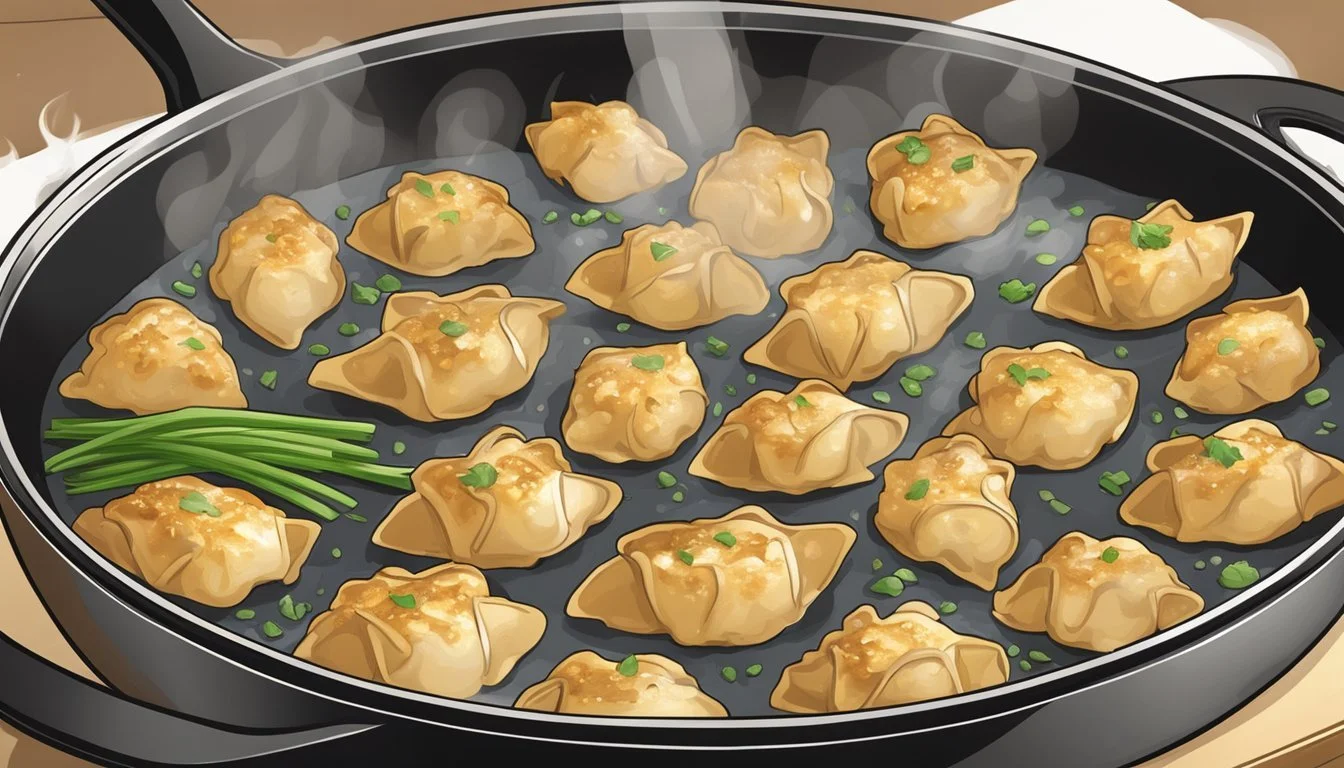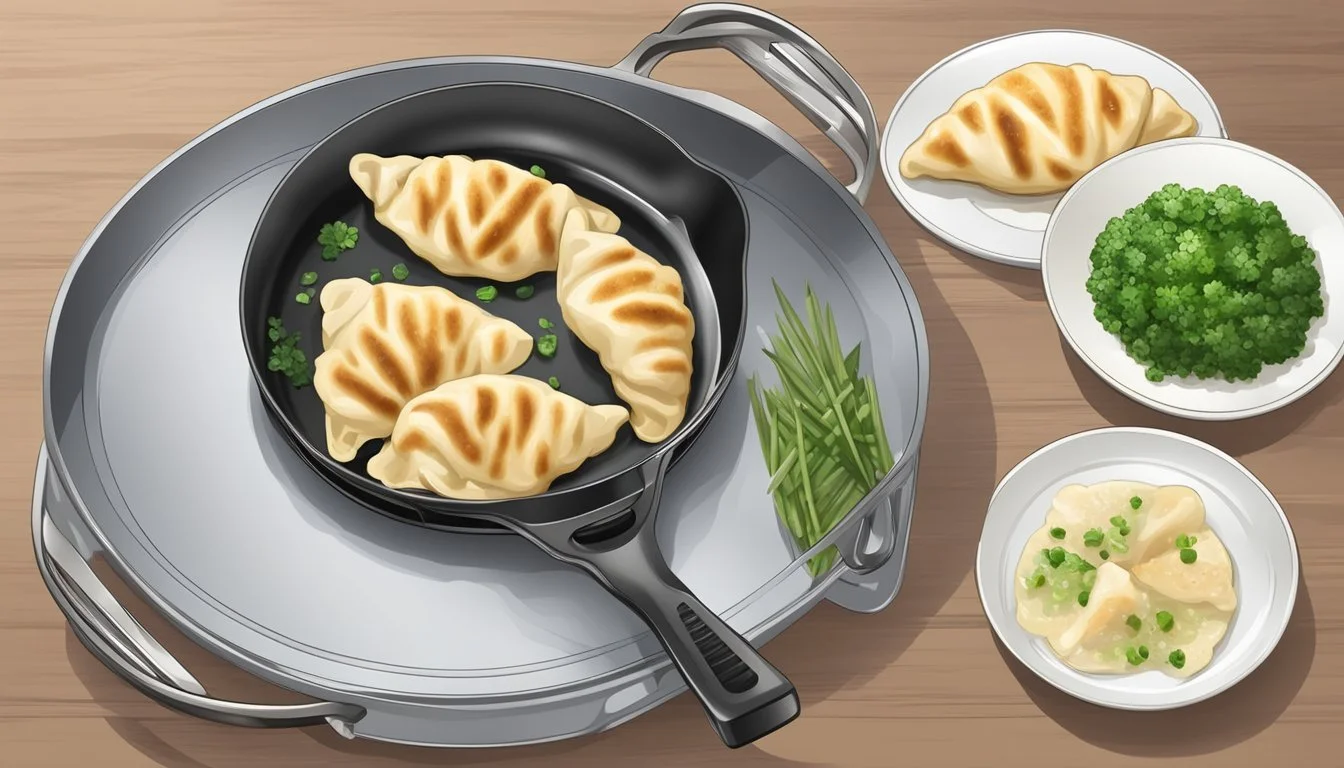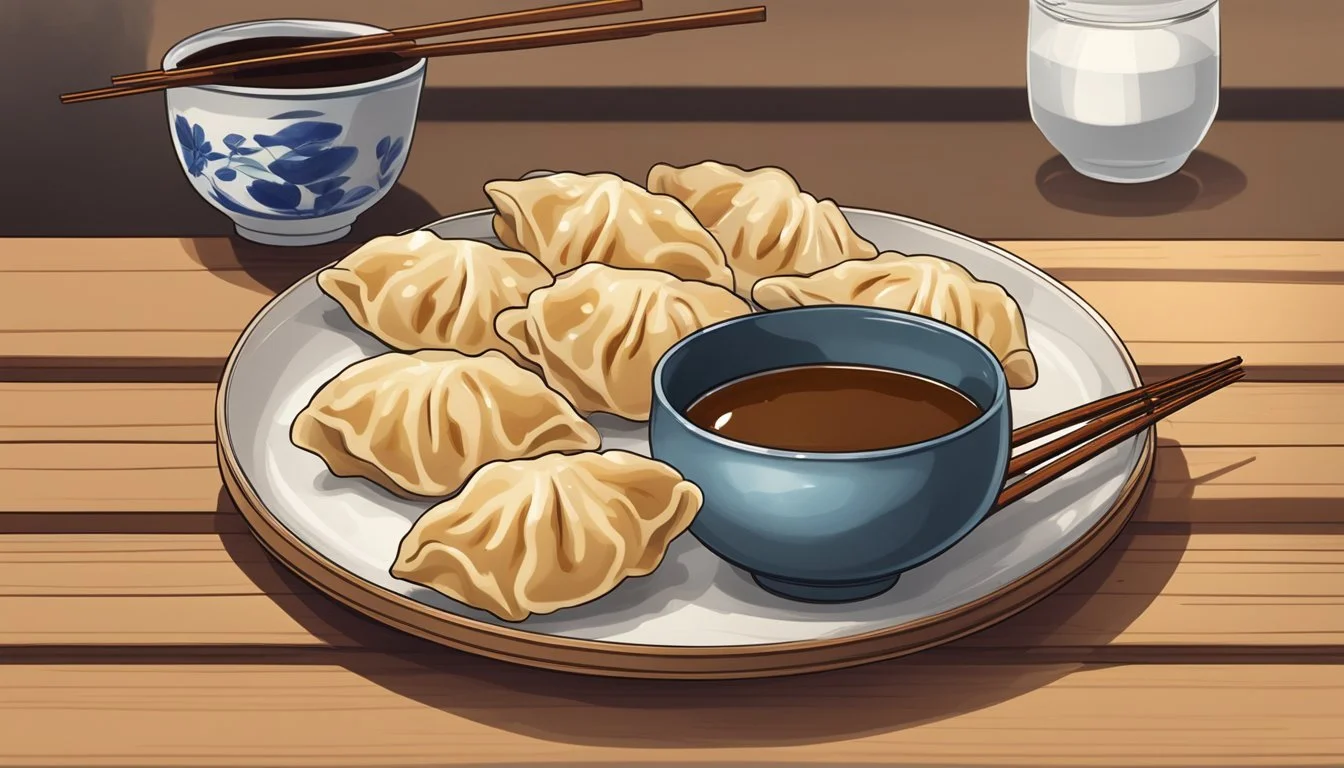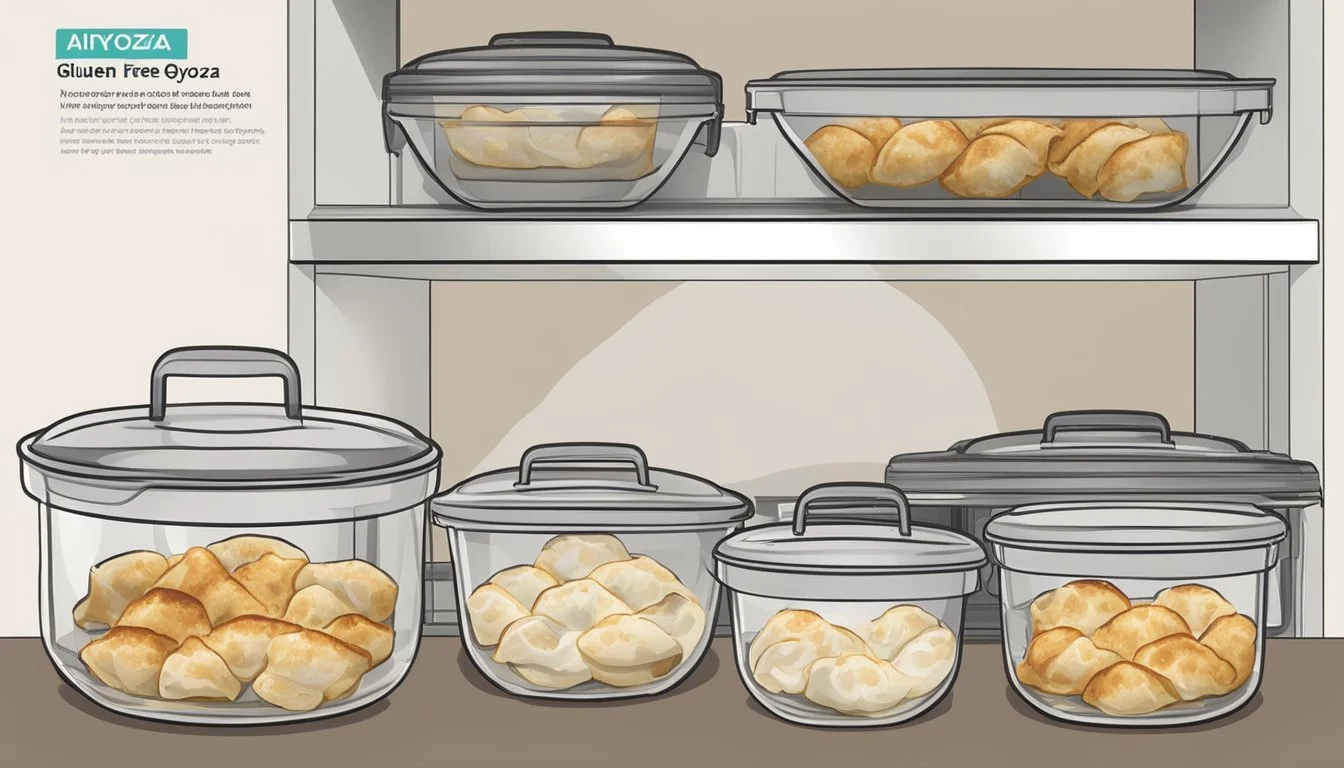How to Reheat Gluten-Free Gyoza (potstickers) for Optimal Taste and Texture
Reheating gluten-free gyoza (potstickers) can be a bit tricky, especially if you want to maintain that perfect balance between a crispy outside and a tender inside. Many enthusiasts find that the traditional methods don't always keep the gluten-free variety as deliciously intact. The secret to reheating gluten-free potstickers is to pan-fry them to achieve both a crisp bottom and a beautifully steamed top.
For those who prefer convenience, the microwave can be a fallback option. By spreading out the gyoza on a microwave-safe plate and covering them with a damp paper towel, reheating can be done quickly while also retaining moisture. This method is simple, yet effective, and ensures the potstickers stay tender.
Another promising technique involves steaming the gyoza. This method helps in keeping the dumplings soft and prevents them from drying out, which is crucial for gluten-free versions. Each of these methods allows you to enjoy your gluten-free gyoza as if they were freshly made, offering versatility and delicious results.
Understanding Gluten-Free Gyoza
Gluten-free gyoza (potstickers) are a popular choice for those who are sensitive to gluten or looking for a healthy alternative. Essential factors include the ingredients used for the dough and fillings, as well as possible substitutes for traditional wheat-based products.
Ingredients and Gluten-Free Dumpling Wrappers
Gluten-free gyoza wrappers often replace wheat flour with gluten-free alternatives such as tapioca starch and rice flour. These ingredients provide the necessary elasticity and texture. To bind the dough, xanthan gum or similar substitutes might be used.
The dough's smooth texture is crucial in creating a wrapper that can hold various fillings without breaking. Eggs or other binders might also be added to achieve the right consistency and pliability.
The Role of Gluten in Dumplings and Alternatives
Gluten provides elasticity and chewiness in traditional dumpling wrappers. In gluten-free versions, achieving a similar texture requires a different approach. Substitutes like tapioca starch and xanthan gum play a critical role in mimicking these properties.
Gluten-free fillings can range from vegetables to meat, with a focus on using soy sauce alternatives to avoid gluten. Ensuring the filling ingredients are gluten-free is crucial for people with celiac disease or gluten sensitivity.
By understanding these key elements, one can create delicious gluten-free gyoza that closely match their traditional counterparts in taste and texture.
Equipment and Tools Required for Reheating
Various kitchen appliances and tools can help achieve the best results when reheating gluten-free gyoza. Understanding their use and the techniques involved is key to keeping the gyoza crispy and delicious.
Best Practices for Using an Air Fryer
An air fryer is excellent for reheating gyoza due to its ability to produce a crispy texture. Preheat the air fryer to ensure even heating.
Steps:
Place the gyoza in a single layer in the air fryer basket.
Use oil spray to lightly coat the gyoza for additional crispiness.
Set the temperature to 350°F (175°C) and reheat for 5-7 minutes, flipping halfway through.
These practices prevent sogginess and ensure the gyoza remains crisp.
Alternate Reheating Equipment
When an air fryer isn't available, other equipment can provide effective results. Methods include:
Microwave: Place gyoza on a microwave-safe plate and cover with a damp paper towel to retain moisture. Heat in 15-second intervals until thoroughly hot.
Steaming: Use a steamer basket in an Instant Pot or any steaming setup. Steam for 3-4 minutes for a soft texture.
Skillet: Add a thin layer of oil to a heated skillet. Place gyoza in the skillet, fried side down, for 1-2 minutes until crisp, then add a small amount of water and cover to steam for another 2-3 minutes.
Each method has specific steps to follow for optimal results.
Preparation Before Reheating
Before reheating gluten-free gyoza or potstickers, it is essential to take a few preparatory steps that will help ensure even cooking and optimal texture. These preparations include properly thawing frozen potstickers and arranging them adequately to avoid moisture buildup and uneven heating.
Thawing Frozen Potstickers
For the best results, frozen potstickers should be thawed before reheating. This step can prevent them from becoming soggy or unevenly cooked. Thaw them by transferring from the freezer to the refrigerator several hours or the night before you plan to reheat them.
If you are short on time, place the potstickers in a microwave-safe dish and use the defrost function of the microwave. Monitor closely to avoid partial cooking.
Arranging Potstickers for Even Cooking
Arrange the potstickers in a single layer on the reheating surface. Whether using a baking sheet, skillet, or microwave-safe plate, ensure no potstickers overlap or touch each other.
Use parchment paper or a light application of oil to prevent sticking. If reheating a large batch, consider cooking in batches to maintain the ideal texture. This method allows for consistent heating and crispy edges.
Reheating Gluten-Free Gyoza
When reheating gluten-free gyoza, the method chosen can significantly impact texture. Air frying keeps them crispy, steaming them results in a softer texture, and microwaving is a quick option.
Air Frying for Crispiness
Air frying is ideal for achieving a crispy exterior on gluten-free gyoza. Preheat the air fryer to 350°F (175°C). Lightly spray or brush the gyoza with oil to enhance crispiness. Place the gyoza in the air fryer basket in a single layer, ensuring they do not touch.
Cook for 4–6 minutes. Check halfway through and shake the basket to ensure even reheating. Cooking from frozen requires an additional 1–2 minutes. Serve immediately to maintain texture.
Steaming for Softness
Steaming is suitable for a softer texture. Fill a steamer with water and bring it to a gentle boil. Arrange the gyoza in a single layer, ensuring they don't touch. Steaming them takes around 5–7 minutes or until heated through.
If starting with frozen gyoza, increase the steaming time by a couple of minutes. Adding vegetables to the steamer can create a more balanced meal. Carefully remove the steamer basket and serve the gyoza hot.
Microwave Reheating: Quick and Convenient
The microwave offers a quick and easy way to reheat gluten-free gyoza. Place the gyoza on a microwave-safe plate. Cover them with a wet towel to avoid drying out. Set the microwave on medium-high and heat for 1–2 minutes.
Check the gyoza halfway and rearrange if necessary. Microwaving from frozen may require an additional 30–60 seconds. Ensure the gyoza reach an internal temperature of 165°F (74°C) for safety.
Finishing Touches and Serving Gyoza
When serving gluten-free gyoza, attention to detail in dipping sauces and garnishing can amplify the flavors and create a memorable dish.
Choosing the Right Dipping Sauce
The right dipping sauce enhances the taste of gyoza. Some popular choices include soy sauce for a traditional touch, or tamari for a gluten-free option. Sweet chili sauce provides a contrasting sweetness, while ponzu offers a citrusy zing.
Combining a few ingredients often yields the best results. For example:
Soy sauce or tamari mixed with sesame oil adds a nutty depth.
Green onions and garlic can be added for freshness and a bit of heat.
Ginger also pairs well for its bright, spicy notes.
Experimentation with these components can yield a dipping sauce that perfectly complements the gluten-free gyoza.
Garnishing Tips for Enhanced Flavor
Garnishing not only adds flavor but also visual appeal. Toasted sesame seeds sprinkled on top provide a crunchy texture and a rich, nutty flavor. Freshly chopped green onions brighten the dish both in taste and appearance.
Garlic and ginger minced finely and scattered over the gyoza add a punch of flavor. For an extra kick, a dash of ground pepper can be included.
To serve, arrange the gyoza on a plate with dipping sauces on the side. This ensures each bite is flavorful and the dish looks inviting. Garnishing thoughtfully can elevate a simple dish into something special and satisfying.
Pairing Gyoza with Other Dishes
Gyoza, whether served as an appetizer, main course, or snack, can be paired with a variety of dishes to enhance its flavors. This section explores complementary Asian cuisines and innovative serving ideas that go beyond traditional meals.
Complementing Gyoza with Asian Cuisines
Asian cuisines offer myriad options to pair with gyoza. Fried rice and gyoza create a balanced meal, with the savory rice complementing the juicy interiors of the potstickers. Another excellent pairing is ramen soup, with the broth providing a contrasting, soothing experience to the crispy texture of fried gyoza.
Japanese cuisine often pairs gyoza with miso soup and seaweed salad, adding light and refreshing elements to the meal. Bibigo and Ling Ling are popular brands that offer gyoza options, which can be paired with traditional teriyaki chicken or tempura vegetables to create a fulfilling dinner.
Innovative Serving Ideas beyond Asian Meals
Gyoza can transcend traditional Asian pairings and be integrated into various cuisines. Serving gyoza as a party appetizer with a variety of dipping sauces, such as spicy aioli or sweet chili, offers a sophisticated touch to any gathering.
For breakfast, consider pairing gyoza with a savory omelet filled with vegetables and a light soy-sesame sauce drizzle. Gyoza sliders are another innovative approach; placing gyoza in a small bun with a touch of hoisin sauce creates a unique fusion snack. The crispy exterior of the gyoza adds a delightful texture to these creative dishes.
Safe Storage and Handling of Leftovers
Proper storage and handling are crucial to maintaining the safety and deliciousness of your gluten-free gyoza leftovers. Ensuring that gyoza is stored correctly can help preserve its taste and texture for future enjoyment.
Proper Storage to Preserve Taste and Texture
Once gyoza is cooked, it should be cooled quickly and stored in an airtight container to prevent it from drying out. Refrigerate the gyoza within two hours of cooking to avoid bacterial growth. Use a shallow container to allow for quicker cooling. Refrigerated gyoza can be kept for up to 3-4 days.
Important tips:
Label the container with the date to keep track of freshness.
Avoid stacking gyoza too high in the container; it can cause them to stick together and lose their shape.
Freezing and Re-Freezing Gyoza
Freezing is an excellent method to prolong the storage life of leftover gyoza. To freeze, place the cooled gyoza on a baking sheet lined with parchment paper. Ensure they do not touch each other to prevent sticking. Freeze for about an hour, then transfer them to a freezer-safe bag or container.
Tips for freezing:
Label the container with the freezing date.
Use gyoza within 2-3 months for the best quality.
Re-freezing gyoza is not recommended as it can negatively impact the texture and flavor. To reheat frozen gyoza, avoid using the microwave directly. Instead, reheat them in a skillet with oil or steam to maintain crispiness and moisture.
Common Reheating Challenges and Solutions
Reheating gluten-free gyoza presents unique challenges such as preventing burnt or uneven heating and addressing dietary concerns related to sodium and allergies. The following specific solutions can help ensure better results.
Preventing Burnt or Unevenly Heated Gyoza
One common challenge is achieving even heating without burning the gyoza.
Solution: Use a skillet method by heating a thin layer of oil over medium heat. Place the gyoza, fried side down, ensuring they don’t touch. Pan fry for 1-2 minutes to crisp the bottom, then reduce heat to medium-low and sprinkle 2-3 tablespoons of water into the pan. This method yields a crispy exterior while steaming the inside, providing an even reheating process.
Microwaving can also cause uneven heating. To counter this, place gyoza on a microwave-safe plate and cover with a damp paper towel. Heat for 15-second intervals, checking between intervals to avoid overheating and ensure uniform warmth.
Addressing Dietary Concerns with Sodium and Allergies
Dietary concerns, especially related to sodium and allergies, are critical.
Solution: Opt for low-sodium soy sauce or alternative seasonings such as coconut aminos to manage sodium intake. Coconut aminos provides a soy-free option that is lower in sodium and fits well with gluten-free diets.
Avoid cross-contamination by using clean utensils and cookware dedicated to gluten-free cooking. Ensure ingredients, like sauces and oils, are free from allergens and gluten. Reading labels and double-checking ingredients will help maintain dietary safety.
By focusing on these methods, one can effectively reheat gluten-free gyoza with minimal loss in quality or flavor, addressing both common culinary and dietary challenges.






